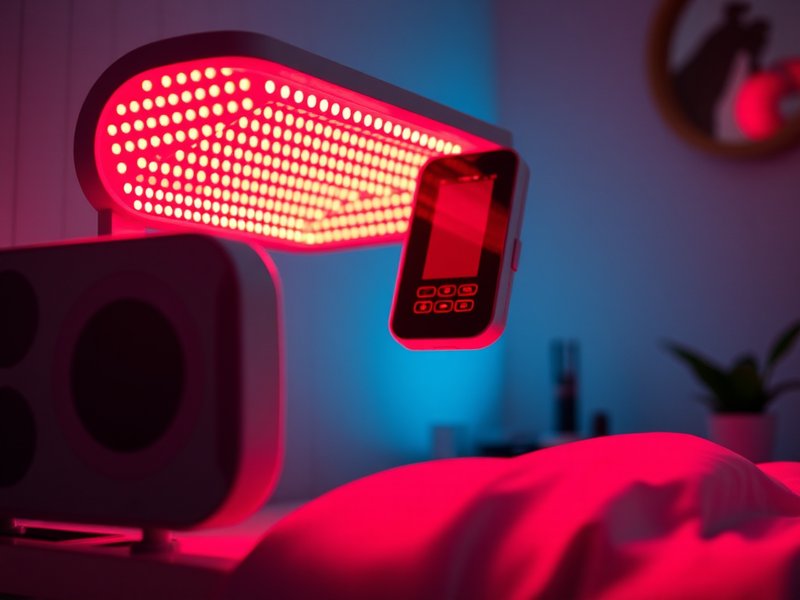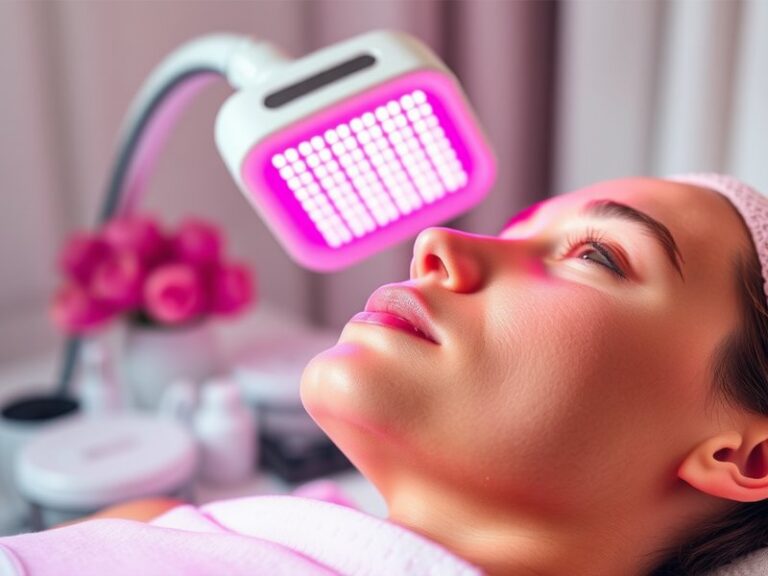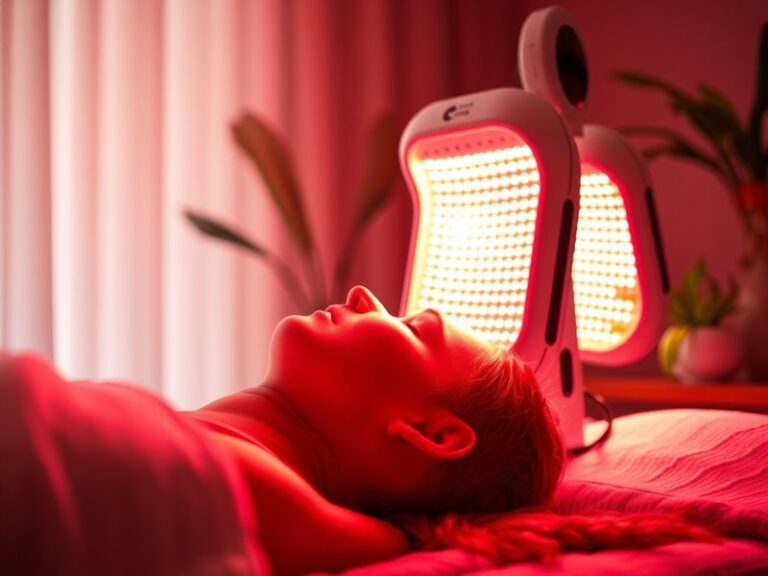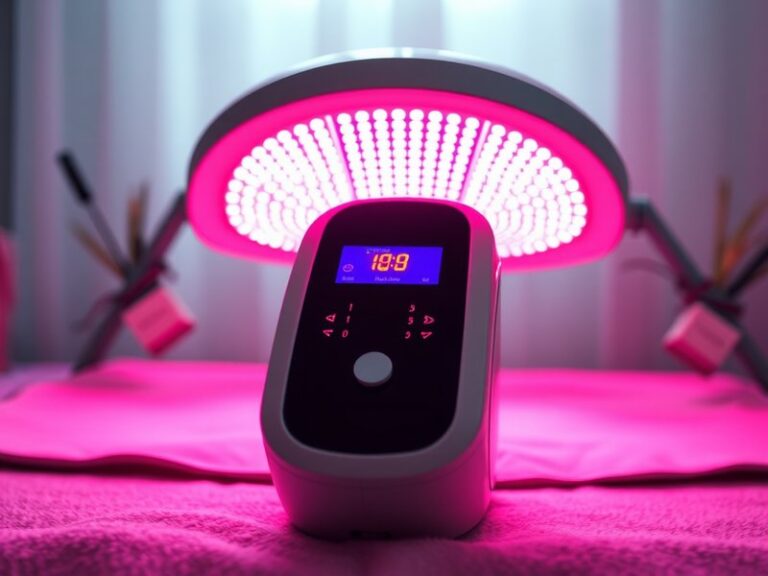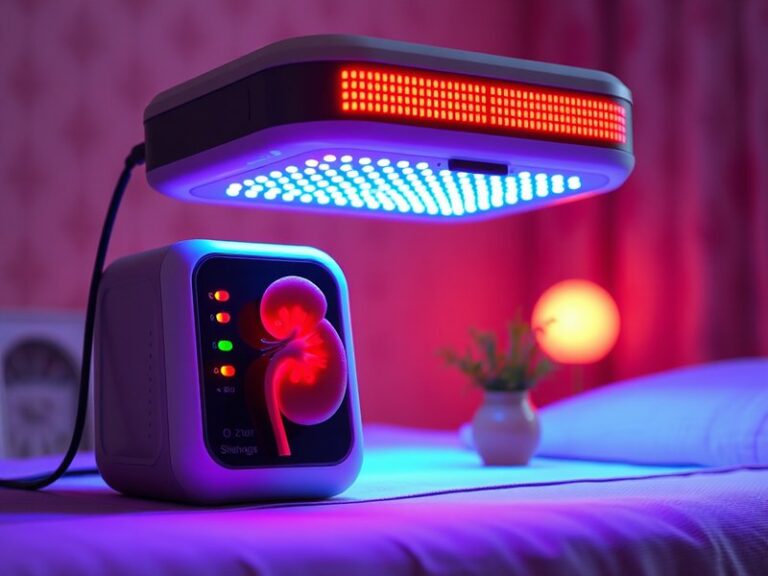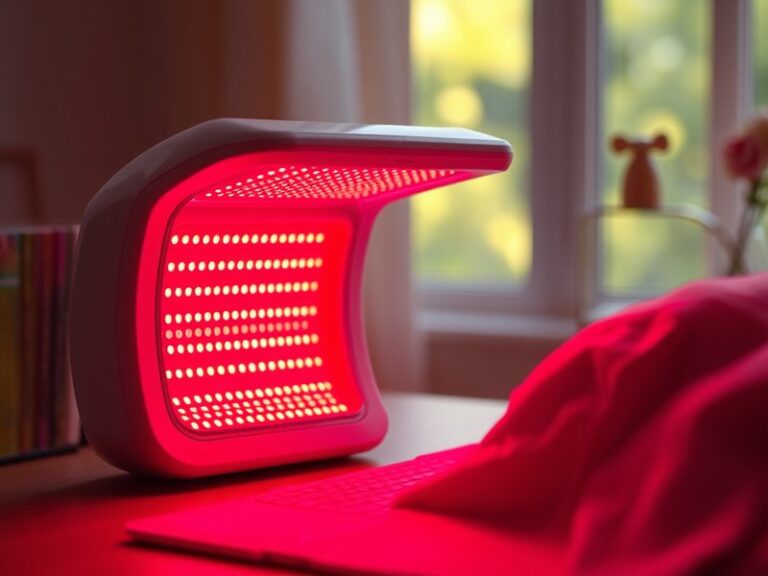Does Red Light Therapy Promote Weight Loss?
Does Red Light Therapy Promote Weight Loss?
Is it possible that a gentle glow might help you shed unwanted pounds?
In recent years, red light therapy has gained attention not only for its skin rejuvenating benefits but also for its potential role in weight loss. This article will explore what red light therapy is, how it works, the associated benefits, and whether it’s a viable option for those looking to lose weight. We’ll also consider alternatives, precautions, and answer some commonly asked questions about the topic.
Discover the story in Can Red Light Therapy Help Eye Bags?
Key Takeaways
- Red light therapy may enhance fat loss by stimulating cellular metabolism.
- While it can be a helpful adjunct to a weight loss program, it should not replace traditional methods such as diet and exercise.
- Always consult a healthcare provider before starting any new treatment regimen, including red light therapy.
What is Red Light Therapy?
Red light therapy, also known as low-level laser therapy (LLLT), involves the use of low-wavelength red light to penetrate the skin. This non-invasive treatment is used for various purposes, including skin healing, reducing inflammation, and even promoting hair growth.
Though still under research, some studies suggest that red light therapy may also influence fat metabolism. The therapy typically involves exposing targeted body areas to red light, which can have various biological effects on cells, including increased ATP (adenosine triphosphate) production, leading to enhanced cell function and energy metabolism.
How Does It Work?
Red light therapy works on the principle of photobiomodulation, where light energy is absorbed by the mitochondria in cells. This can stimulate cellular activity and promote healing. When applied to fat cells, it may enhance their ability to release stored fat, thus supporting weight loss.
What are the Benefits of Red Light Therapy?
Red light therapy offers several promising benefits, particularly for those considering it as part of a weight loss strategy. Below, we outline some of the key advantages associated with this therapy.
See why in Red Light Therapy After Microdermabrasion?
Enhanced Fat Loss
Emerging research indicates that red light therapy may help reduce the size of fat cells. A study showed that patients using red light therapy lost a significant amount of weight compared to those who did not receive this treatment.
Improved Recovery and Reduced Inflammation
By aiding in tissue repair and reducing inflammation, red light therapy may help you recover faster from workouts. Improved recovery can lead to enhanced physical performance and better adherence to exercise routines, which are crucial for weight loss.
Boosted Metabolism
Some studies suggest that red light therapy can enhance metabolic processes. An increased metabolic rate can lead to more calories burned throughout the day, further supporting weight management efforts.
Additional Benefits
- Skin Health: Red light therapy can improve skin tone and texture, which may enhance overall body confidence during a weight loss journey.
- Mood Enhancement: Regular use can promote a sense of well-being, potentially reducing emotional eating driven by stress or anxiety.
Is it Possible to Use Red Light Therapy for Weight Loss?
Yes, integrating red light therapy into your weight loss routine is possible, although it should not be relied upon solely. Many individuals report positive outcomes when combining therapy with healthy dietary choices and regular exercise.
What are the Advantages of Using Red Light Therapy?
- Non-Invasive: Red light therapy is a non-invasive method that typically doesn’t involve any downtime.
- Complementary Approach: It can work alongside traditional dieting and exercise regimens without replacing them.
- Painless Procedure: Most users experience no pain, making it a comfortable addition to wellness routines.
What are the Disadvantages of Using Red Light Therapy?
- Limited Research: While promising, further studies are needed to confirm the effectiveness of red light therapy for weight loss conclusively.
- Cost: Regular sessions can become expensive, particularly if opting for professional treatments.
- Time Commitment: Results require consistent application over time, which may not suit everyone’s schedule.
What are the Things to Consider Before Trying Red Light Therapy?
Before beginning any form of red light therapy, it is essential to consider some factors that may influence the success and safety of the treatment.
Consult Your Healthcare Provider
Always speak to a healthcare professional prior to starting treatment, especially if you have underlying medical conditions or are taking medications.
Choose Quality Equipment
Ensure that you utilize high-quality devices, whether from a clinical setting or at home. Poor-quality devices might not yield beneficial results.
Understand Your Goals
Clarify your weight loss goals and understand that red light therapy can be an adjunct, but not a replacement, for healthy lifestyle changes like diet and exercise.
Duration of Treatment
Consistency is vital. Understand how frequently and for how long you will need to undergo therapy to see results.
What are the Alternatives to Red Light Therapy for Weight Loss?
If red light therapy does not appeal to you, or if you’re seeking additional methods to promote weight loss, there are other options available.
Dietary Changes
Implementing a well-rounded diet that focuses on whole foods, lots of vegetables, and balanced macronutrients can be highly effective for weight loss.
Regular Exercise
Incorporating regular physical activity is crucial. Activities like strength training, cardio, and yoga can aid in burning calories and building muscle.
Behavioral Modifications
Addressing behavioral patterns and emotional triggers can significantly impact weight loss. Consider working with a professional for strategies like mindful eating.
Alternative Therapies
Consider other treatments such as acupuncture or massage therapy, which may also encourage weight loss by reducing stress and improving metabolic functions.
Conclusion: Is it Recommended to Use Red Light Therapy for Weight Loss?
In summary, red light therapy presents an interesting option that may support weight loss efforts, especially when combined with traditional lifestyle changes. While promising benefits exist, it is crucial to approach this treatment as part of a broader strategy that includes healthy eating and exercise. Consulting with a healthcare provider can help tailor the best plan for individual needs.
Frequently Asked Questions
Does red light therapy have any side effects?
Most people experience minimal or no side effects. However, some may notice skin irritation or redness at the application site.
How often should I undergo red light therapy for weight loss?
Frequency can vary based on individual needs, but many practitioners recommend sessions 3-5 times a week for optimal results.
Can I use red light therapy at home?
Yes, there are home devices available, but it’s essential to choose a reputable brand and understand the correct usage.
What type of red light therapy device is best for weight loss?
Look for devices with the appropriate wavelength (typically between 600-650 nm) for fat loss. Professional devices often have higher intensity and better results compared to consumer-grade ones.
Is red light therapy suitable for everyone?
While generally safe, individuals with specific medical conditions, such as hormonal disorders or those on certain medications, should consult a healthcare professional before proceeding.
